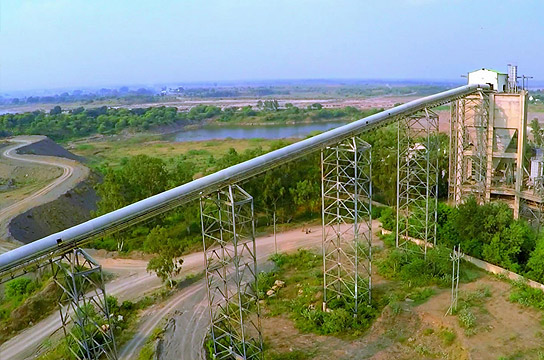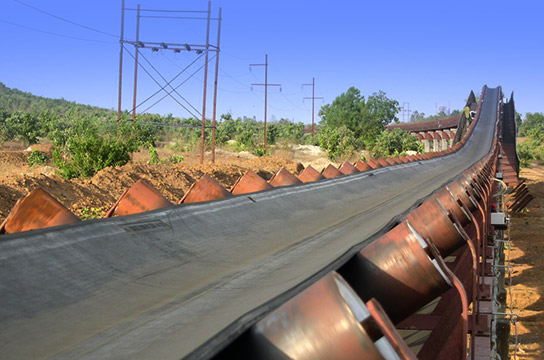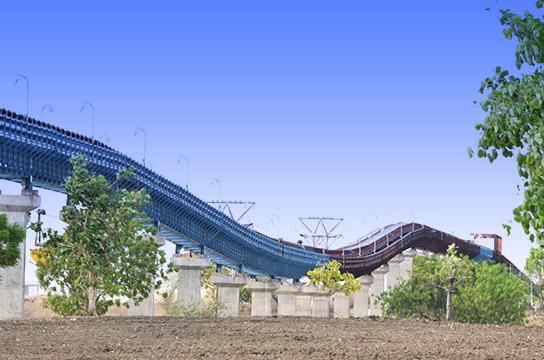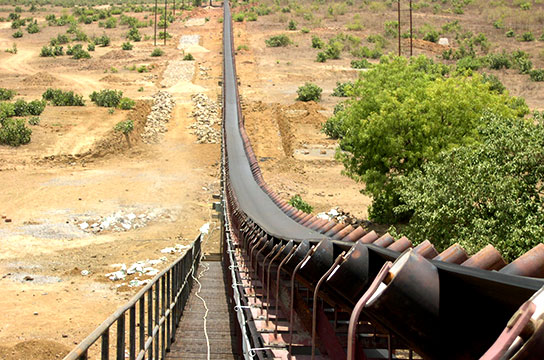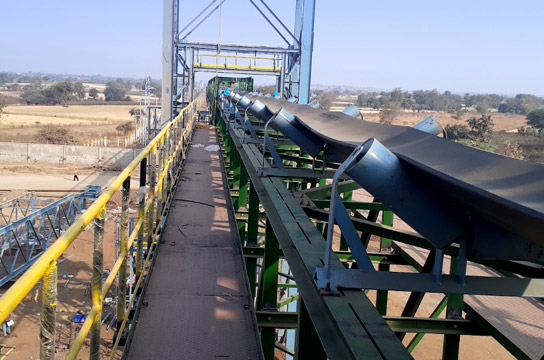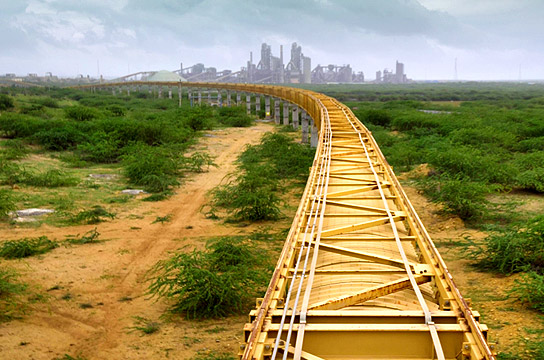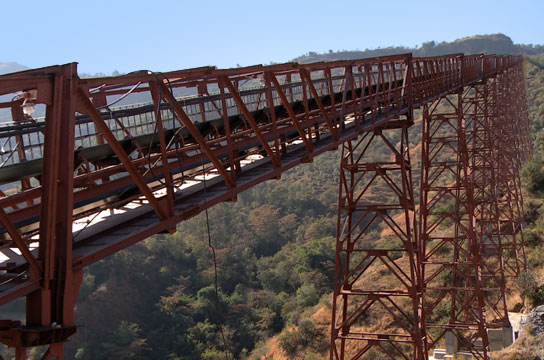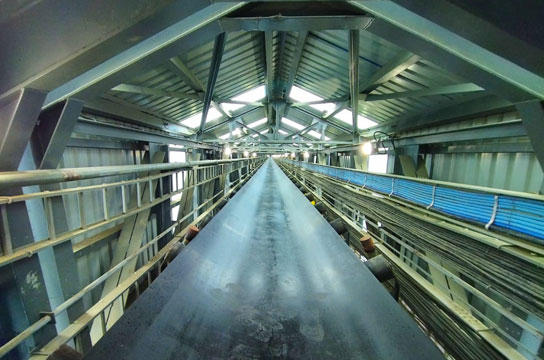The first Indian company to indigenously design, supply, erect, test and commission a Long Distance Overland Belt Conveyor. Our OLBCs ensure safe transportation of bulk materials, drastically increases the capacity of bulk material transportation while cutting costs substantially.
We supply customized systems of belt conveyors, having varying speeds and capacities, to meet the diverse requirements of customers.
The Belt conveyors can be troughed or flat, horizontal or inclined, with or without curves. Flat belts are used for low capacity, low speed and horizontal conveyors for materials having higher angle of repose. Troughed belts are adopted for high capacity, high speed conveyors, with or without incline. The belt conveyors are designed with horizontal curves and vertical curves for overland conveying over long distances, in general following the natural contour of the terrain.
The length of the OLBC system is suitably divided, depending on the availability of power along the route and accessibility to the site. This is done to reduce the cost of belt and electrics and optimise the cost of the system.


